Reasons To Quit Smoking Habit
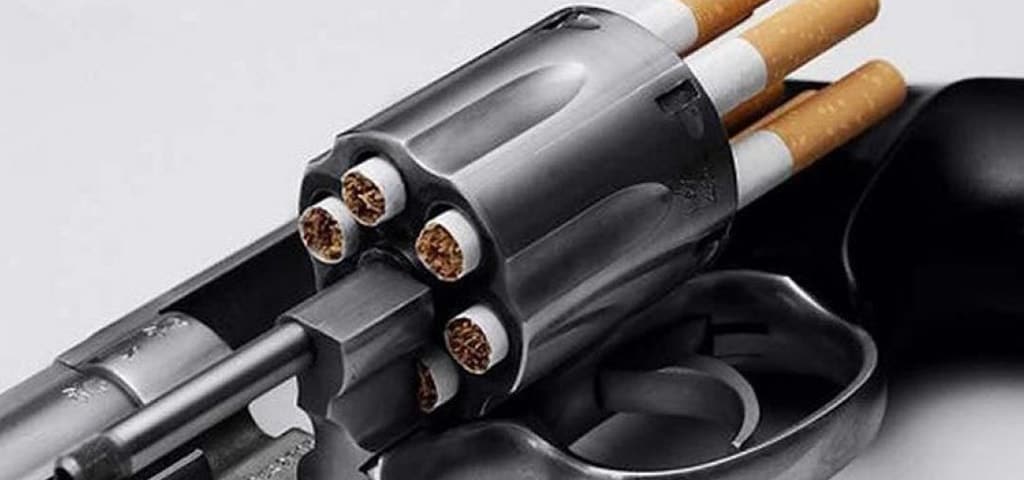
Quit Smoking Habit for a healthier future – break free from the cycle of inhaling and exhaling tobacco smoke in the form of cigarettes. Not only is smoking a detrimental individual habit, but it also impacts the well-being of the entire family. Lung cancer is the most common disease which is caused due to smoking habit. Apart from lung cancer, it can also lead to many types of lung diseases, heart attack, stroke and etc. People standing near the smokers also inhales the tobacco gas which can also cause lung problems to them. This smoke can also affect an unborn baby in the mother’s womb. Birth defects like cleft palate and low birth weight are common problems for newborn babies whose mothers are exposed to first-hand or second-hand smoking. What is Second Hand Smoking? A person who smokes exhales 80% of the tobacco gas in his surrounding. Nearby people can inhale that gas which is poisonous and that is called as passive smoking or Second-Hand Smoking. In India, every year 1.2 lakh people are affected by this environmental tobacco pollution. What is third-hand smoking? Most of the toxins from tobacco will be deposited in the bed sheet, pillow cover, window screen, etc. The family members who share the smoker’s room will be exposed to those harmful agents. This is called as third-hand smoking. Harmful substances in tobacco: Tobacco consists of formalin, arsenic, and naphtha which are the most hazardous substances. We all know that formalin is used for embalming dead bodies. Arsenic is used as a rat poison and naphthalin balls are used to keep the bugs away from new dresses in the cupboard. These are the few substances available in tobacco from among 4000 odd chemicals in the tobacco smoke. So, a smoker not only poisons himself but also embalms his own body while alive. Diseases caused by tobacco: There are many products available with harmful tobacco substances like the womens cigarette, cigarette lite, and electronic cigarette. Cigarette light can cause a type of lung cancer called as adenocarcinoma and regular cigarette can cause another subtype of lung cancer called as squamous carcinoma. The cigar is the reason for mouth cancer. By choosing the style of smoking, the choice of cancer is chosen by the smoker. Why quit smoking? Most of the nearby people will suffer directly or indirectly because of the smoking habit. After all, we are living with them and for them. So if we stop smoking, people living nearby us also will be safe. How to quit smoking Habit? To stop the habit of smoking, you should get help from the medical professionals. From the second day of quitting, you may experience some withdrawal symptoms like irritability, anxiety, anger and loss of sleep. To manage these problems, medical supervision is essential. The doctor will prescribe behavioral therapy, counseling, nicotine patches or inhalers along with other tablets to make quitting successfully. If you have undergone these prescriptions, you will become a normal person to get free from smoking in just 12 weeks. Raise voice against smoking: Raise voice against smoking to help people free from lung diseases and mouth cancer. November month is considered as the “lung cancer awareness month” worldwide. Explore More: Sudden cardiac arrest | Sinus Headache | Floating Kidney
Physical Exercise Makes A Heart Healthy
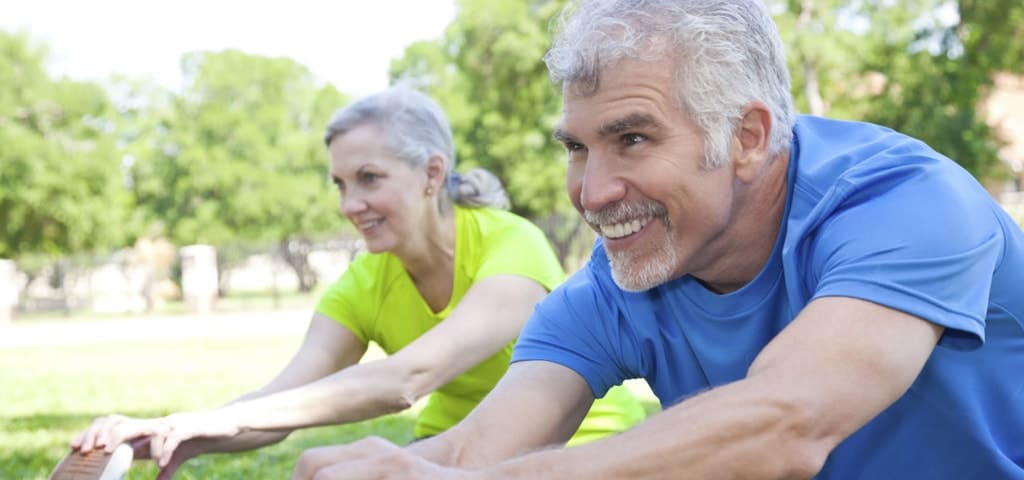
The necessity of physical exercise: Embark on a journey towards heart health through the lens of physical exercise. Numerous epidemiological studies underscore the pivotal role of regular physical activities in improving overall health by significantly reducing cardiovascular morbidity. In the realm of leisure time, medical experts advocate engaging in specific physical activities as a proactive measure to diminish the risk of Coronary Artery Disease (CAD). Surprisingly, leisure-time physical activity emerges as a formidable force, demonstrating its ability to lower morbidity rates even when juxtaposed with genetic and familial factors. Join us as we delve into the profound impact of targeted physical exercise for heart well-being, navigating a path to a heart-healthy lifestyle. Benefits of physical exercises for Heart: Levels of physical exercise: Physical activity for primary prevention is class IB and for all eligible patients with Acute Coronary Syndrome is class IA. So the physical activity and exercise training are promoted for primary and secondary prevention of Coronary Artery Disease(CAD). Moderate physical activities include walking briskly 5-8 km/hr, leisure cycling, moderate effort swimming, playing golf, general cleaning at home or lawn mowing. Vigorous physical activities include running, rope jumping, pushups, pullups and situps. In Secondary prevention, aerobic training should be increased gradually. Aerobic fitness will be achieved with regular walking by increasing the speed and distance gradually. Test for patients: Patients should check their pulse rate while exercising and according to the pulse rate, they should adjust their exercise intensity. Simply they can use talk test with other companies about the intensity during exercise or walk. Thus physical exercises can make heart healthier without any disorders. Learn More: Best Cardiologist hospital in madhurai | Cardiothoracic surgery hospital in madhurai
Post Traumatic Stiffness Of Elbow Joint
Normal elbow movements are essential for daily activities like eating, work, and other leisure pursuits. If their right is affected, it will be more difficult. Normal elbow movement is 0-150°. When the elbow is straight, it is 0 position and it is called as an extension. When the elbow is up to full, it is called as flexion. Elbow joints, one of the commonest joints in the body which gets injured in children and adults after a fall or after a director injury. When you fall from a bike or in stairs or on the street, we automatically tend to protect our body from falling on the outstretched hand are land on the tip of the elbow injuring it. Traumatic Stiffness Of Elbow Joint can occur after accidents, affecting the essential mobility required for various activities. Very often, after the injury in the rural setup and also in the urban area people take it likely and go for native treatment. The post-traumatic stiffness of the elbow joint is one of the most common problems, we see in our day to day practice. All the more it is common in our country as most of the villages including learner people go in for native treatment even after X-rays being taken, because of fear of surgery, on the insistence of old folks at home and economic constraints. ANATOMY: Elbow movement of flexion and extension occur through the ulna humeral and radio-capitellar articulation along with the proximal radioulnar joint. The radio-capitellar articulations further provide an important interface to forearm rotation. This movement of rotation is important for eating, to receive something from with the hand or for any games. CAUSES OF ELBOW STIFFNESS: The important cause of the elbow stiffness is following an injury. The other cause is being myositis ossifications (New bone formation around the elbow joint). This may form commonly after a massage by native doctor head injury and burns. Other causes like tuberculous arthritis, rheumatoid arthritis, non-specific sub-acute infections and hemophilia must be ruled out. AIM OF TREATMENT: The main indication for elbow release surgery is stiffness that limits the activates of daily living. Especially on the right side for eating. Extension (bring the elbow into straight position) loss is better tolerated than flexion (taking the hand to mouth) loss. For release surgery (Arthrolysis), a normal articular surface is important. HISTORY TAKING: This is important to know about the initial injury, period of immobilization (prolonged immobilization with plaster or by bamboo sticks, native medicines are bad for elbow joint) and previous history of surgical intervention. MOVEMENTS: The usable range of movements for elbow joint is 30“ to 130″. If an individual has this range of movement, a course of physiotherapy will suffice. But it must be done very carefully, sometimes it may become worse also. X-RAY: To assess the joint anatomy regarding any old fracture and unreduced dislocation, articular congruity, presence and location of plates and screws, the presence of myositis mass and its location for the future plan for surgery. Sometimes CT scan and MRI may be necessary. TREATMENT: For the release of elbow stiffness surgery, it is important for the patient to know that they will get a usable range of movement and not a perfect joint movement. After the release of the contracted tissues around the joint (Arthrolysis) and removal myositic mass, it is mandatory the patient must co-operate for intensive physiotherapy. The pain during mobilization will be reduced by painkillers, ice back therapy, wax therapy and continuous passive motion machine CPM. Physiotherapist must be well experienced and patient’s cooperation is important. CONCLUSION: Elbow release surgery (Arthrolysis) is a reward and it is done by an experienced surgeon. The role of physiotherapist is very important who is competent to give relief of pain and increase the range of movement after surgery. All the more essential is patient’s compliance and cooperation to get back the usable range of movement of 30“-l30°. We always give a lot of moral support to get back the usable range of movement and tell them ‘Life is mobility, mobility is life’. Life is miserable to live with a stiff and painful elbow. There is always a cure for stiff elbow by surgical methods in the form Arthrolysis and rarely elbow joint replacement. Also Read: Physiotherapy Tips for Marathon Training | Cardiac surgery for kids
Total HIP Replacement
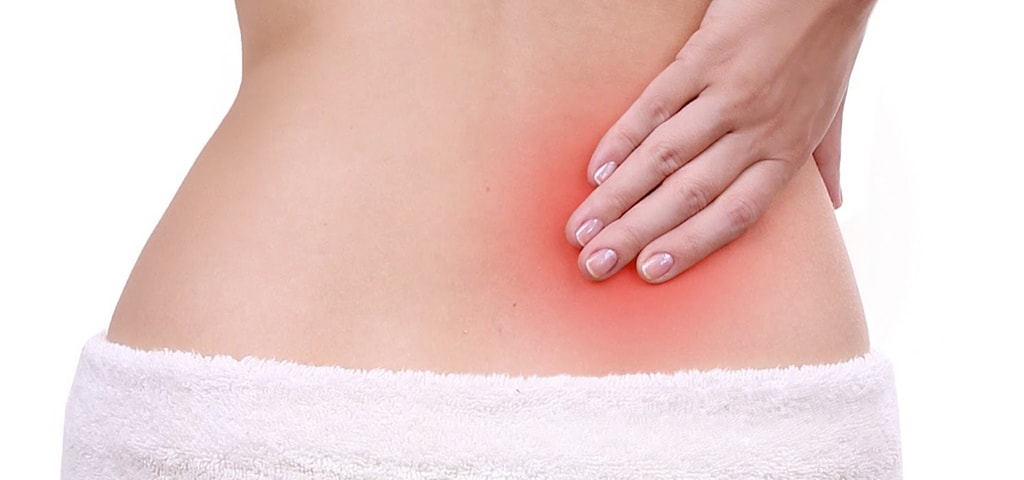
When the hip joint is damaged, activities like walking, running, sitting, squatting, and sitting cross-legged can become challenging, highlighting the significance of total hip replacement in restoring mobility and improving daily life COMMON CAUSES OF HIP DAMAGE: 1. Osteoarthritis:This a condition where there is degeneration of the smooth cartilage covering the ball and cup of the hip joint due to wear and tear. Apart from excess weight and work, genetic and racial causes also are attributed to osteoarthritis.2. Avascular necrosis:The bone is a living organ and it requires blood to survive. The blood supply to the hip joint is reduced in this condition and the ball part of the hip bone dies and the bone collapses and becomes irregular. This causes pain and disability to a person. 3. Rheumatoid arthritis:Rheumatoid arthritis is a disorder affecting many joints of the body, where there is cartilage damage and resulting in arthritis.4. Post-traumatic arthritis:Sometimes serious injuries to the hip joint like dislocations or fractures can lead to irregular joints and cause secondary arthritis and pain.5. Childhood hip disorders:Some childhood hip conditions like congenital hip dislocations, Perthes disease, etc can lead to secondary arthritis.6. Infections:Infections of the hip joint especially Tuberculosis in our country can lead to joint damage and arthritis. When all modalities of treatment such as physiotherapy, exercises, medicines do not give any pain refief, then a total hip replacement is given as an option to people suffering from hip arthritis. Total hip replacement is a surgery, where both the ball and socket of the hip joint are replaced with artificial materials. This surgery was pioneered by Sir John Charnley of England in the 60s and evolved over the years to long-lasting implants available today. Total Hip Replacement: Surgical Procedure and Recovery Overview In a total hip replacement (also called total hip arthroplasty), the damaged bone and cartilage is removed and replaced with prosthetic components. 1. The damaged femoral head can be removed and replaced with a metal stem. Then it can be placed into the hollow center of the femur. The femoral stem may be either “press fit” or cemented into the bone.2. Ceramic ball or a metal can be placed on the upper part of the stem and the damaged femoral head can be replaced with ceramic ball.3. The damaged cartilage surface of the socket called acetabulum can be removed and replaced with a metal socket. Screws or cement are sometimes used to hold the socket in place.4. A plastic, ceramic, or metal spacer is inserted between the new ball and the socket to allow for a smooth gliding surface.THR is usually done under general or epidural anesthesia, and the person is made to walk after 2 days from surgery and patient can go home after 5-7 days. Complications like infections, DVT and dislocations can be avoided by taking adequate precautions. Like mentioned earlier, newer materials like titanium, ceramics, and materials allowing bone growth into the artificial implant lead to longer life of implants. Also larger diameter ceramic heads allow the person to sit on the floor and squat as well. A well done uncemented, a ceramic implant can last upwards of 30 years. Total hip replacement is a successful surgery and can change the lives of people who are suffering from arthritis of the hip. Explore More: Reattatchment of ampulated body part | Bone Fractures | Fractures In Children
Prenatal Screening
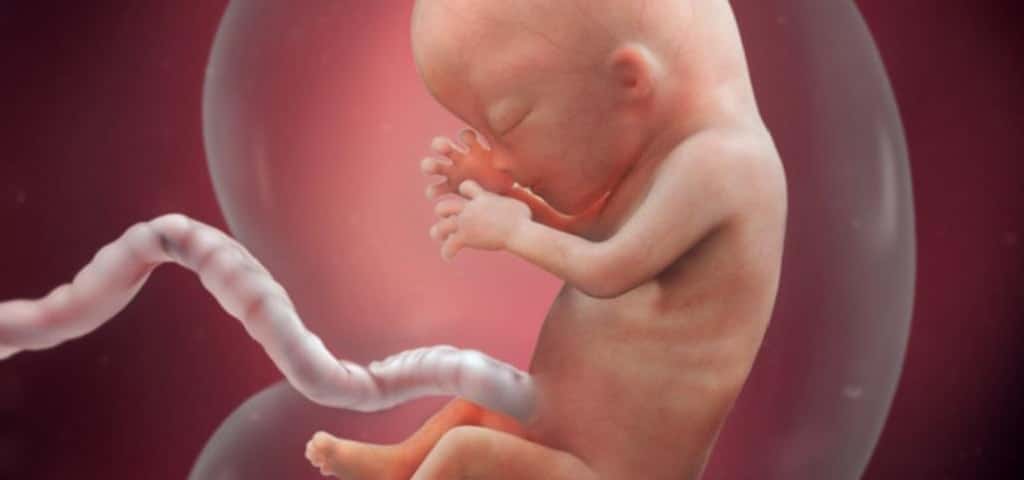
Be informed about your baby’s health during pregnancy. Pregnancy is a wonderful time filled with excitement, curiosity, and anticipation of a new addition to the family. Early weeks of pregnancy is exciting and anxious too. Pregnant mothers would want reassurance that baby is normal and healthy. Navigate the joys and uncertainties of pregnancy with confidence through Prenatal Screening. From the early weeks to later stages, our comprehensive tests provide reassurance, ensuring both mother and baby are in optimal health and on track for a normal and thriving development What are Chromosome Conditions? It occurs when there are extra or missing chromosomes or a rearrangement of pieces of chromosomes. Physical and intellectual development can be affected because of this. Down syndrome is the most common condition. People with down syndrome have 47 chromosomes instead of 46. Why Prenatal Screening needed? While most babies are born healthy, only 2 or 3 out of 100 newborns may have major birth defects. For the majority of defects, the cause is unknown. However, there are certain birth defects that can be tested in pregnancy before the baby is born.The first-trimester screening popularly known as FTS is performed to rule out the possibility that you are at increased risk of having a baby with down syndrome, Trisomy 18 or Trisomy l3. Understanding Down Syndrome? In our country the baseline awareness of Down Syndrome is low and that for the screening test is even less. Down Syndrome is a Chromosomal abnormality where the child is born with an extra Chromosome 21. Down Syndrome occurs in about 600 to 700 pregnancies all over the world. Any women can have a baby with Down Syndrome. The risk varies with the mother’s age. 70% of babies with down syndrome are born to younger mothers and therefore screening is offered to all women.Down syndrome results in developmental problems and a higher risk of conditions including heart defects, mental retardation, breathing and hearing problems and also childhood leukemia. The severity of these conditions varies greatly from individual to individual. No treatment is available for down syndrome. Counseling and support to manage the baby are the only hope. What is Trisomy 18 and Trisomy 13? Trisomy 18 and 13 are comparatively rare and severe forms of the chromosomal abnormality associated with severe developmental delay and a physical problem with life-threatening complications in a baby‘s first month and years. No treatment is available for Trisomy 18 or 13. Why prenatal Screening important? Being tested during pregnancy allows you to be informed about the health of your baby even before birth. How is prenatal screening performed? Various methods are practiced. The screening can be done in the first trimester, second trimester or in both trimesters. The screening takes into account of mother’s age, a blood test and a special ultrasound test. What is First Trimester Screening and when is it done? Optimal time is from 11 weeks to 13 weeks 6 days. It involves a blood test and ultrasound. The ultrasound confirms your baby’s age and measures the amount of fluid behind the baby’s neck (Nuchal Translucency or NT Scan).The first-trimester Nuchal translucency scan offers several additional benefits. Other abnormalities like cardiac anomalies, diaphragmatic hernia, skeletal dysplasia, abnormal lymphatic drainage, neuromuscular disorders are associated with increased NT. Hence detailed anatomic survey and fetal echo are needed. What is Second Trimester Screening? If the pregnant patient has missed the opportunity of first trimester screening. She should undergo second-trimester screening. Yet the detection rates for down syndrome is lower than FTS around 65-70%. Second Trimester Screening also checks for open neural tube defects such as spina bifida, a condition of improper development of the brain and spinal cord. Post-test counseling: Once the screening is done. The result is again explained. If screening is positive, then the details of invasive testing are discussed like amniocentesis or CVS (Remember, a screening test does not confirm the Chromosomal problem, a positive test should be followed by a confirmatory test). Be sure to discuss these additional confirmatory test with your doctor. Most babies are born healthy. Early, more accurate screening gives peace of mind during pregnancy. Learn More About: Infant Feeding Practice | Breastfeeding techniques | Fractures In Children
JOINT REPLACEMENT SURGERY
Joint Replacement Surgery is being done for people suffering from painful joints (mostly hips & knee) due to arthritis for various causes. Commonly, people above the age of 50 suffer from wear and tear of the knee or hip joints leading to osteoarthritis – pain & swelling. After all measures of medical treatment with injections, tablets, physiotherapy etc, if the person still has pain, then they may be considered for joint replacement surgery. Normal joint contains two or more bones covered by cartilage causing smooth movements. Due to wear and tear, the cartilage gets damaged and the person gets pain and swelling. Similarly, cartilage can be damaged due to injury, which can also lead to arthritis. So, in all these conditions, joint replacement is the preferred treatment, and after treatment, medicines have no side effects. Hip and Knee joints are the most commonly replaced joints. Other joints like shoulder, elbow, wrist, finger and ankle joint are also replaceable but less frequently. Once a person decides to have a joint replacement, he/she undergoes full body checkup to prepare for surgery. When all is well, then they are given either regional or general anesthesia and the joint replacement is performed on the affected joint. In the hip, it is a ball and socket joint, so both the parts are replaced by artificial materials. The affected hip is removed and the artificial cup made of metal or plastic is fixed to the bone. The metal cups is lined with plastic or ceramic on the inside. The metal cup is initially fixed by screws and eventually, bone grows over its outer surface and keeps it in position. In older individuals where the quality of bone degrades the plastic cup be fixed with bone cement. The ball part of the hip is replaced by a metal or ceramic ball which is attached to a stem and it is inserted into the thigh bone. Here also, in older individuals, bone cement can be used to hold the stem in position. Normally, a cemented hip replacement lasts for 10 years to 20 years, whereas an uncemented hip replacement can last up to 30 years. The use of ceramic (toughened) cups and the ceramic ball has made the hip replacements last much longer than before. In the knee joint, the lower end of the thigh bone and the upper end of the leg bone are shaped so that it can hold the artificial joint. The artificial knee joint is held by bone cement. After the surgery, the person is given adequate pain relief and by the second day after surgery, the person is made to walk, bend the knee or hip. Physiotherapy is given meticulously to ambulate the person as quickly as possible. Once walking well with the support of walking aid – walker / Sticks, the person is discharged to home in a week and sutures are removed by the second week. The person can continue to walk with the support of walking aids for 3-6 weeks after which, they can walk freely. The success rate for joint replacement is approximately 98% with infections and DVT being possible complications. Infections are controlled by operating in 0% bacteria operation theaters and antibiotics. DVT or clotting of blood can be prevented by thinning the blood during and after surgery for a few days with medicines. Latest advancements in joint replacement surgery include computer assisted orthopedic surgery, patients specific instrumentation (customized for each patient), and newer materials which last, longer. Computer Assisted Orthopaedic Surgery (CAOS) was started at DMH as early 2005 (One of the First in India) and is still done due to its accurate placement of implants which in turn leads to longer life for the implant. Newer materials like ceramic oxonium and highly porous metal surfaces lead to longer life of the implant. So a well-done surgery should relieve the symptoms of pain and deformity for someone suffering from arthritis and get the person back to normal life, pain-free and fully mobile.
VITILIGO (LEUCODERMA)
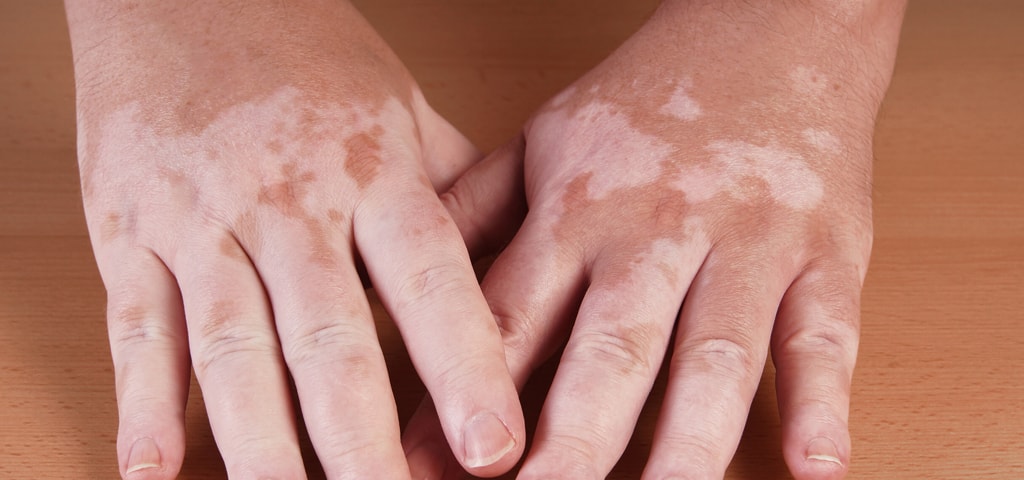
Vitiligo (Leucoderma) is a condition where white patches appear in different parts of the body. It is relatively higher amongst the Indian population. It is a matter of concern as misconceptions about the disorder are higher and so is rejection in society. Which part of the body can be affected? Any part of the body can be affected such as hands, legs, head (scalp), soles, lips and mouth (Oral cavity) too. Any part of the skin and mucosa can be affected. What causes these white patches? The disease is autoimmune. One‘s own immune system destroys the melanocytes (pigment cells) in the skin. Genetic predisposition can happen for children whose parents have the disease are more likely to develop it. At times, deep injuries or burns where the deeper layers of the skin are affected can also cause vitiligo (Leucoderma). Emotional stress can cause a flare condition or trigger the disease process. It is associated with hyperthyroidism or hypothyroidism. Which age groups gets affect? Any age group can develop vitiligo. This disorder affects all races and sex equally. White skin people usually don’t bother much about it as it doesn’t show as much as in darker skin individual. In India, the prevalence rate is higher (2%). How to assess if it will spread all over the body? There is no way to predict the course of the disorder. For some patients, the patches just remain stable. Few experience rapid spread of the condition. Some patients complain of itching during spread. Physical and emotional stress can aggravate the condition. There are many ways to control the spread of the disorder. So the earlier, the patient approaches the doctor is better. Myths about vitiligo:Vitiligo is not a contagious and does not spread through touch. This is not a life threatening disorder and does not affect any other system in one’s body. Treatment:Treatment modalities for vitiligo are many. The goal of the treatment is usually to stop the spread of the disorder and restore lost skin color. NonSurgical Methods: Cosmetic makeup:Cosmetic makeup is done to color your skin and these can help the patient get back their confidence. Self-tanners are also available and have to be used regularly to retain the color. Oral medications:Oral medications are available which stop the white patches from spreading and oral psoralens also help re-pigmentation. These medications should be prescribed by registered doctors. Topical applications:Topical applications like cream help re-pigmentation. Topical psoralens solutions are also used to re-pigment the skin. There are a lot of constraints in using topical applications. Small parts are more effective and usually face helps more than limbs or body parts which are less exposed to sunlight. Light Therapy:Light therapy is very effective. PUVA therapy has been used for many years and is outdated now. It has a few side effects and is very slow in repigmentation. Narrow Bend Ultra Violet B (UVB):Narrow Band Ultra Violet B (UVB) is the latest in Light therapy and has minimum side effects. Re- pigmentation is faster and it also helps to control the spread of the disorder. High power Narrow Band UVB:High power Narrow Band UVB is the most effective in re-pigmentation but is limited to smaller areas. Surgical Procedures: Suction Blister Technique:Blisters are made with special equipment on the normal skin and the top layers of these blisters are used as skin grafts, which are fixed on the white patches. The skin around the lips and eyelids (skin is very thin) are ideal for this technique as cosmetic results are very good. Split Skin Graft:It is a very common procedure. A graft is taken from the normal skin with special knives and transferred to the white patches. Very large areas cannot be treated with this procedure. Melanocyte Transfer Surgery:The advantage of this surgery is that the larger area can be treated with small grafts. White patches up to 100 sq.cm can be treated in one session. This procedure needs only a short time and repigmentation is done within a short time span of 3-6 months. There are laser treatment and some medications which are used very judiciously in resistant cases (patients not responding to any treatment).Vitiligo is one disorder which does not affect a person physically but the mental trauma caused is unfathomable. Also Read: Prenatal Screening | Traumatic Stiffness Of Elbow Joint | Physical exercise for heart
Osteoporosis
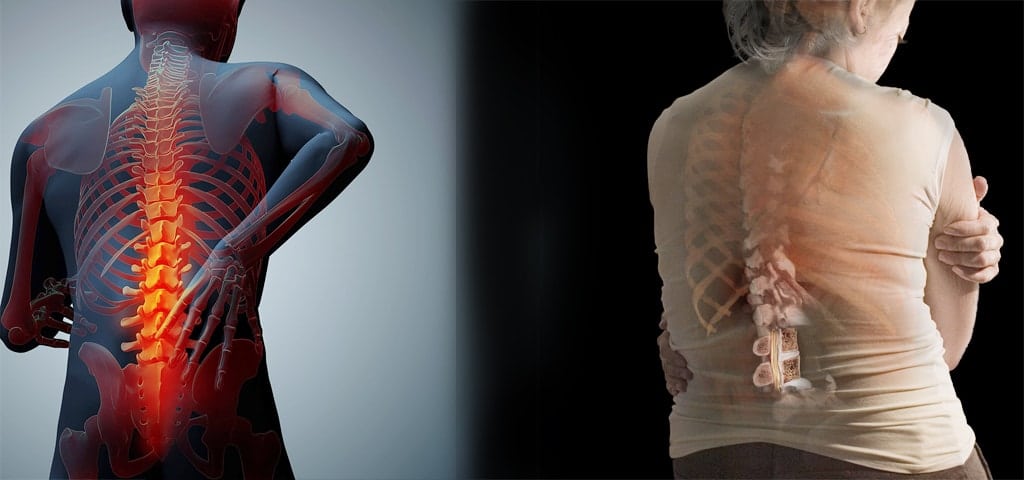
Osteoporosis is a disease of bone characterized by low bone mass and weakness of bone. This, in turn, leads to brittle bones and painful fractures. It can occur in one in two women after the age of 45 or post-menopausal age. Men over 60 years of age can also be affected. The bone is a living organ which is constantly built and taken down. Diet, exercises, hormones and age are the factors which favor for building bone. To maintain a healthy bone, a balance of bone building and bone take down is required. When this balance is broken, then osteoporosis or weakness of bone results. The disease is a silent killer because there are no symptoms. A fracture may be the first symptom of this problem. Common fractures of the spinal bones after trivial falls, after traveling in a bus on a bumpy road or even coughing can cause this painful fracture. Similarly, wrist bone fractures due to falling on an outstretched hand, hip fractures due to falls at home can also occur due to osteoporosis. This fractures are difficult to treat as they occur usually in elderly populations and healing potential of fractures are also poor. Also, the plates and screws used for fixing these fractures don’t hold well on a soft bone. Hence there will be a loss in fracture reduction and failure to unite. PREVENTION OF OSTEOPOROSIS: As with many diseases, prevention of osteoporosis is better than undergoing the pain of fracture and costly treatments after that. Osteoporosis fractures are preventable if osteoporosis is diagnosed early. Diagnosing osteoporosis is by simple tests with x-rays, DEXA scans, ultrasound scan or MRI. Ultrasound scan of the heel is commonly done to screen the population for osteoporosis. The more sensitive test for osteoporosis is a DEXA (Dual Energy Xray Absorptiometry) scan, which is done for the whole body as well as places where fractures frequently occur, namely hips and spine. World Health Organisation (WHO) has classified the risk of fracture occurring on a graph and according to the bone density compared to a normal person, the risk is given and treatment must be started accordingly. TREATMENT: Treatment is aimed at strengthening the bone by either reducing the bone turnover or by building up the bones. Many treatments have been tried and a group of drugs called bisphosphonates is effective in improving the quality of bone in osteoporosis. Another new drug is synthetic parathyroid, which is given as an injection on a day to day basis for several months. This drug helps in building up the bone and hence improves the strength. MYTHS ABOUT OSTEOPOROSIS: 1. Osteoarthritis (wear and tear of joints) is a result of osteoporosis. This is not true as they both are caused by different problems. Though they can coexist, they are not the reason for each other. 2. Vitamin D deficiency causes osteoporosis. Again, this is not true as explained earlier, the reason for osteoporosis is not vitamin D deficiency. 3. Calcium supplements can cause side effects. This is partially true as overdoses may lead to certain heart problems and kidney stones in those who already have a propensity for kidney stones disease. Consult your doctor for correct dosage of calcium supplements. Its consequences are preventable, if you have an adequate diet, do regular exercises and perform a DEXA scan every year in post-menopausal age group. Treatment is indicated if there is a decrease in bone mineral density. Learn More: HIP Replacement | Traumatic Stiffness Of Elbow Joint | Physical exercise for heart
Polio Vaccination

Background of Polio Vaccination: The availability of two effective vaccines against poliomyelitis for the past five decades has ensured a remarkable decline in the global burden of diseases. They were developed in the USA during 1950, first the inactivated polio vaccine (IPV) by Jona Salk and later the live oral polio vaccine (OPV) by Albert Sabin. The global polio eradication initiative was launched in 1988 using oral polio vaccination as the eradication tool and employing a foot pronged strategy comprising high routine immunization coverage, supplementary nutrition, pulse immunization, AFP surveillance and Mop-up immunization. Age Group for Polio Vaccinataion: Affects child under 5 years Transmission: Oral Polio Vaccine (OPV): Inactivated Polio Vaccine (IPV): OPV vs IPV: OPVGood IgA response (Mucosal immunity) Lower humoral response IPVLow IgA responseStrong humoral response(IgG) What is Mucosal Immunity? It refers to the resistance to mucosal infection by wild poliovirus due to prior infection with WPV. Mucosal immunity decreases the replication and excretion of the virus and thus provides a potential barrier to its transmission. What is Humoral Immunity? It refers to IgG antibodies which have an inhibitory influence on local infection. Herd effect with Polio Vaccines: Herd effect means the phenomenon of immunized individuals affecting the epidemiology of infection in the unimmunized segment of the population. Recommendation for combined use of OPV and IPV: Doses and Schedule: Catch-up Vaccination: IPV may be preferred as catch-up vaccination for children less than 5 years of age who have completed primary immunization with OPV. IPV can be given two doses at 2 months interval. Immunodeficient Children and their close contacts: Read More: Physical exercise for heart | Fractures In Children | Causes of snoring
Diabetic Kidney Disease
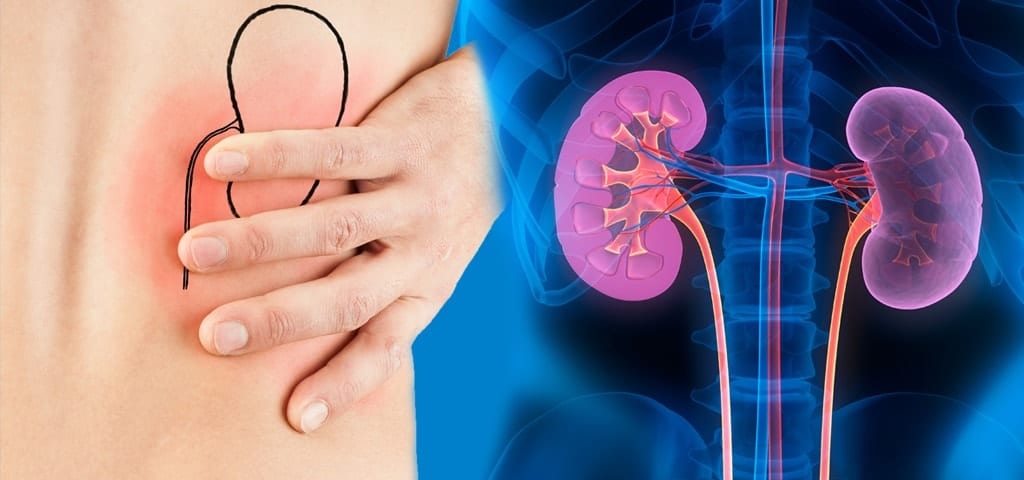
India is the country with most of the people having diabetes, with a current figure of 50.8 million (data from International diabetic federation). Diabetes mellitus accounts for 31% of total kidney failure patients in India. Of these patients, around 60 to 70 % of them are in their earlier stages, were in another 30% in the terminal stage of renal failure, who usually come for treatment (what physicians see is the tip of the Iceberg). Kidney function measured in terms of GFR (glomerular filtration rate) normally is 125 ml/min. Symptoms of kidney failure usually manifest only when GFR falls by less than 10 ml/min. Those patients in the initial phase of kidney failure, if identified earlier and treated properly, can be prevented from progression to severe diabetic kidney disease. Who are all prone to develop Diabetic kidney disease? The risk of development of kidney failure is 30 to 40 percent in diabetic patients. If a relative (especially first degree) of a diabetic patient affected by kidney failure, the risk of developing kidney failure in this patient is 83 %. Urine excretion of protein (precursor of kidney failure) is very much increased in children of diabetic patients with kidney failure. Other risk factors include children born to diabetic mother and low birth weight children when they grow up. Dietary factors include intake of foods rich in added sugars. The usual progression of Diabetic kidney disease: Diabetic kidney disease usually starts with protein loss in urine, initially with a smaller amount (microalbuminuria), later with a larger amount of protein loss (macroalbuminuria), further leading to a gradual decrease in kidney function culminating in an increase in renal parameters like urea and creatinine. These processes usually take about 15 to 20 years from the time of onset of diabetes mellitus. Recent studies have shown that there are about 30% of people who progress to renal failure without having the phase of protein leak in urine. Precipitating factors for progression of Diabetic kidney disease: Who are all to be screened for the presence of kidney disease, in a diabetic person? Factors that can prevent progression of Diabetic kidney disease: Medicines that prevent progression of Diabetic kidney disease: Medicines that are available which not only decrease blood pressures but also reducing pressures within the kidneys (intraglomerular hypertension) have been found to retard the progression of diabetic kidney disease. When these medicines are started early, further progression of kidney disease and worsening of renal parameters (urea, creatinine) can be halted, so the progression to dialysis can be prevented or at least prolonged. Primary prevention of Diabetic kidney disease: Adequate blood sugar control, blood pressure control may help in preventing diabetic kidney disease. Early screening for kidney disease may help in the institution of specific medications that may help in preventing further worsening of the disease. Learn More: Fracture Surgery | Liposuction | Enthesopathy